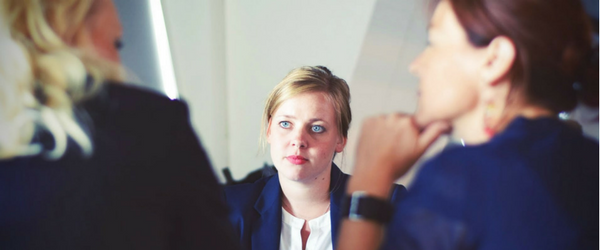- 47% of jobs could possibly be replaced by robots.
- 60% of careers in the future don’t exist yet.
- 50 % of skills currently considered valuable will be obsolete in the future.
We know the job market is in the midst of a major transformation, one that makes things uncertain for job seekers. It is thus necessary to invent a new model, that, rather than being imposed, should be built hand-in-hand with employees themselves.
Hackathons, internal entrepreneurial project incubators, innovations and so on, these are the kinds of initiatives companies have put into place to respond to innovation and better prepare employees for the future. But within these changes lies an opportunity for Human Resources to reinvent themselves, and focus on, what really matters: the “human” part of the job.

“Our role is to accompany our colleagues so that they can become drivers of innovation at every level. And so, we must manage changes in mindset,” explains Mathilde Le Coz, Director of HR innovation at Mazars (a Julie Desk user). We interviewed Ms. Le Coz in order to better understand how digital transformation is affecting HR.
Adoption: the key to digital transformation
With the arrival of digital and its accompanying technology boom (notably that of Artificial Intelligence), managing digital change has become a major issue for companies today. “The difficulty in digital transformation doesn’t lie in the search for innovative solutions, but rather in the capacity of employees to adapt to the changes themselves,” explains Le Coz.
We know something about that here at Julie Desk, where our solution can only be as powerful and as innovative as it is implemented by its users. If not properly adopted, it simply won’t work.
“We are currently testing Julie Desk and the feedback is very positive. Once one implements such a solution, it is key to accompany employees in the change, whether that be by listening to their fears, or empathizing with them. That is the best way succeed in unifying dissent and making real sustainable change,” says Le Coz.
Though in-house “Champions of new tech” and so-called “Power Users,” will surely help train other employees and help manage internal change, the provider of the new tech must also play a role in the transformation process. At Julie Desk, it’s Justine who works day in and day out to ensure the satisfaction of our clients. That said, without an internal movement, that help will only go so far.
“In our many digital transformation projects, the tech aspect is often well managed, but the human aspect is often put off to the side, even though it is essential to a project’s success.”
Preparing for the company of tomorrow
More flexibility.
Once upon a time, a good paycheck was enough to attract and retain talent. That is no longer the case. “Today’s workers privilege work-life balance. And so, to retain talent, companies must present themselves as being more human,” says Le Coz.
There are some initiatives such as remote-work or flexible workspace initiatives for employees in place at Mazars. “Today we want our employees to feel that they can move around, without that affecting collaboration.” A solution like Julie Desk integrates itself easily into such changes; Julie knows user preferences and these can allow users to look at their workplace and their calendar from afar. For example, “Home Office” is a service that schedules meetings depending on where the user is.
More meaning
Ameliorating the work experience is also about adding meaning to the tasks given to employees.
“I’ve always found that scheduling meetings is a thankless task. I’d never give that task to my assistant. I would lose nearly 2 hours a day on this task that has no real meaning or value.”
The time freed up by new technology gives both employer and employee the opportunity to put in place training to build additional skills, a task which has special value considering that most of today’s skills will become obsolete in the coming years.
“The HR representative is often thought of as a liaison between people: the manager and his team, his office and another and so on. But he/she is also in charge of liaising training with the employee receiving it. Facilitating this link leads to the benefit of the team’s collective intelligence,” says Le Coz.
Special thanks to Ms. Le Coz for telling us about her experience. Have you also put in place actions that would help with managing technological changes in your company? Let us know!
